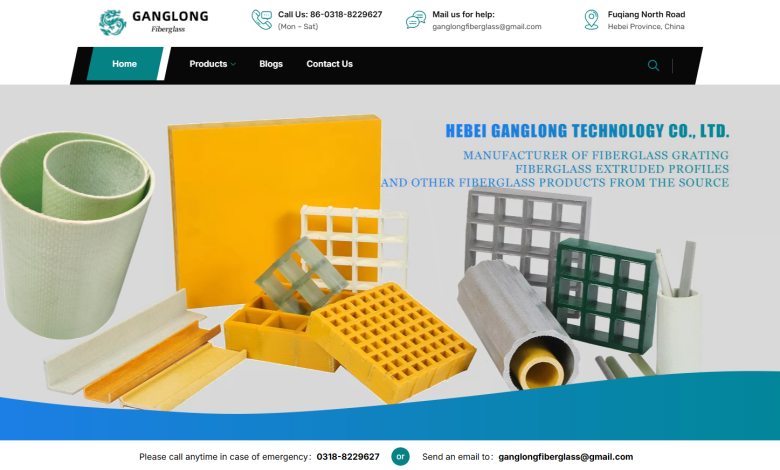Effective Tips to Use Fiberglass Sheets

Effective Tips
Fiberglass sheets are widely used for a range of applications due to their strength, durability, and versatility. To ensure that you maximize the benefits of fiberglass sheets while minimizing costs and waste, it’s essential to follow some key tips for their efficient use. Here are some strategies to help you get the most out of your fiberglass sheets in various projects:
Select the Right Type of Fiberglass Sheet
Choosing the correct type of fiberglass sheet is crucial for ensuring that the material performs as needed for a particular application. Different types of fiberglass sheets offer various characteristics based on the resin used, the fiber structure, and the thickness of the sheet. For instance, E-Glass is commonly used for general-purpose applications, while S-Glass offers superior strength and is ideal for demanding industrial or structural applications. Selecting the right type based on strength, flexibility, and resistance properties will help ensure that you are using the most suitable material for your needs, thus avoiding potential rework or costly repairs. GangLong Fiberglass offers a wide variety of fiberglass sheet types, including options with different resins and fiber structures to meet specific industrial demands. Their expertise in producing high-quality, customizable fiberglass sheets ensures that customers can find the ideal solution for any application.
For Cable Ladder, which require high strength and resistance to corrosion, choosing the appropriate fiberglass sheet type with the right resin, such as epoxy or vinyl ester, will ensure long-lasting durability and optimal performance.
Measure and Cut with Precision
Accurate measurements and cuts can significantly reduce material waste and improve the overall efficiency of your project. When working with fiberglass sheets, ensure that you measure the required dimensions carefully and use the correct cutting tools. A sharp utility knife or a power saw with a fine-toothed blade works best for cutting fiberglass sheets, providing clean edges and reducing the likelihood of fraying or material waste. Pre-planning your cuts and layout can help minimize the number of cuts needed, which not only saves material but also time.
Use Proper Handling Techniques
Fiberglass sheets can be fragile when not handled properly, leading to cracks, chips, or damage to the material. To ensure the sheets remain intact and undamaged, handle them with care during transportation, cutting, and installation. It’s also important to avoid bending the sheets excessively, as this can cause them to break or lose their structural integrity. Always use the appropriate lifting equipment or a team of people when moving large or heavy sheets to avoid damage during handling.
Ensure Proper Storage Conditions
Proper storage of fiberglass sheets is essential for preserving their quality and preventing any environmental damage. Store the sheets in a cool, dry place away from direct sunlight or extreme weather conditions. UV radiation can degrade the fiberglass over time, leading to a reduction in its strength and durability. If storing for extended periods, make sure the sheets are placed flat and supported adequately to avoid warping or bending.
Consider Reinforcement for High-Stress Applications
In some cases, fiberglass sheets may need to be reinforced to handle heavy loads, impacts, or harsh environments. Adding Chopped Strand Mat (CSM) or using a resin with greater chemical or heat resistance can significantly enhance the strength and durability of the fiberglass sheets. For example, when using fiberglass sheets for Cable Ladders or structural reinforcement, incorporating CSM will add additional strength and flexibility, making the material more suitable for demanding applications that require heavy-duty performance.
Optimize Resin Use
When working with fiberglass sheets, the resin plays a vital role in bonding the fibers and ensuring the final product’s strength and durability. Applying the correct amount of resin is essential—too much resin can result in excess weight and cost, while too little can compromise the material’s strength. Be sure to follow the recommended resin-to-fiber ratios provided by the manufacturer for the specific type of fiberglass sheet you are using. Additionally, choosing the right resin for your application, such as polyester for general use or epoxy for superior chemical resistance, will ensure the longevity of your fiberglass sheets.
Reinforce High-Impact Areas
In projects where fiberglass sheets will be exposed to heavy impacts or stress, reinforcing key areas can extend the life of the material. Use additional layers of fiberglass sheets or Chopped Strand Mat to strengthen sections of the fiberglass sheet that will bear the most load. This is especially important for applications like Cable Ladders, where certain sections need to handle the weight of electrical cables or other heavy materials.
Take Advantage of Pre-Cut and Pre-Fabricated Sheets
For certain applications, purchasing pre-cut fiberglass sheets or pre-fabricated components can save a significant amount of time and effort. Pre-cut sheets are available in standard sizes that may suit your needs, reducing the need for manual cutting and minimizing material waste. Pre-fabricated products, such as Cable Ladders, offer easy-to-install solutions that are ready for use without the need for additional preparation, making the process faster and more cost-effective.
Recycling and Waste Reduction
Fiberglass is a durable and long-lasting material, but when it is no longer needed or becomes waste, it can be difficult to recycle. However, taking steps to reduce waste during the initial fabrication process can help lower costs and minimize environmental impact. Carefully plan cuts and use leftover scraps for smaller projects or reinforcements where possible. Some companies also offer fiberglass recycling services, so it’s worth investigating options for recycling any fiberglass waste produced during your project.
Use the Material’s Full Potential
Lastly, make sure you’re using fiberglass sheets to their full potential by considering all the available properties of the material. Fiberglass can be molded, laminated, or coated with various substances to enhance its performance in different environments. For example, fiberglass sheets can be treated with fire-resistant coatings or UV inhibitors to increase their effectiveness in construction or marine applications. By understanding and utilizing the full range of capabilities of fiberglass, you can ensure that the material serves your project efficiently and effectively.




